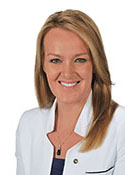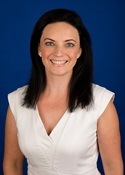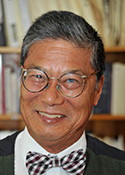Lindsay
Margin: Liberal 3.0%
Region: Western Sydney, New South Wales
In a nutshell: Labor has been obsessed with the Penrith-based seat of Lindsay since losing it unexpectedly in John Howard’s 1996 landslide, and it has gone with the winning party at every election since that time.
Candidates in ballot paper order

|
MARCUS CORNISH KINGSLEY LIU FIONA SCOTT SCOTT GRIMLEY EMMA HUSAR STEPHEN RODDICK WARREN HOWARD WORMALD DEBORAH MAY BLUNDELL JIM SALEAM LINDA LA BROOY STEPHEN LYNCH |
Based around Penrith 50 kilometres west of Sydney, Lindsay has gone with the winning party at every election since its creation in 1984, and has gained a mystique as a barometer of electorally sensitive middle Australia. A band of suburbs clustered around the Western Motorway and Great Western Highway runs through the centre of the electorate, extending from St Marys through Kingswood and Penrith to Emu Plains on the far bank of the Nepean River, to the north and south of which are conservative semi-rural areas. The electorate and its 3.0% Liberal margin have gone undisturbed by the redistribution.
Lindsay had a notional Labor margin of 12.3% on its creation, and was held for the party by Ross Free on margins of around 10% throughout the Hawke-Keating years. Free was then unpleasantly surprised to find himself turfed out in 1996 by an 11.9% swing to Liberal candidate Jackie Kelly, but then secured himself a rematch through the courts on the grounds that Kelly, who had not expected to win, had failed to divest herself of her “office for profit under the Crown”, namely her job as an RAAF officer. Voters did not thank Free for dragging them back to the polls on a technicality, and Kelly’s win was reconfirmed with an extra 5.0% on her margin.
The combined 16.9% swing to the Liberals over the two elections encouraged a view that the electorate typified John Howard’s key constituency, with its skilled workers on solid incomes, low levels of tertiary education, and distinctly less multicultural flavour than areas closer to the city. This view was solidified by Jackie Kelly’s persistent success despite the area remaining loyal to Labor at state level. The swing against Kelly in 1998 relative to the 1996 election result was only 0.3%, a crucial result in the context of an election where the Coalition lost the national two-party vote. This was followed by a favourable swing of 2.4% in 2001, and a swing the other way of just 0.2% in 2004. Kelly’s electoral successes helped her gain the favour of the Prime Minister, and she was promoted for a time to a junior ministerial position that some thought beyond her competence.
To John Howard’s dismay, Kelly opted not to seek re-election in 2007, which further added to the seat’s vulnerability after redistribution cut the Liberal margin from 5.3% to 2.3%. Any remaining Liberal hopes, both for Lindsay and the election as a whole, were sunk in the final days of the campaign when the husbands of Kelly and her successor candidate Karen Chijoff were among those caught distributing pamphlets purporting to be from Muslim extremists, in which Labor was praised for its support of the “unjustly” treated Bali bombers. Labor’s candidate, lawyer and former Penrith mayor David Bradbury, then secured a 9.7% swing to gain the seat on his third attempt.
Labor strategists became increasingly agitated about the party’s standing in the electorate as the state government entered its period of terminal decline, culminating with a 25.7% swing to the Liberals in a by-election for the state seat of Penrith in June 2010. This was followed five days later by Kevin Rudd’s demise as Prime Minister. It was reported that the party’s then national secretary, Karl Bitar, demanded that all policy proposals pass a “Lindsay test”, inspiring a tougher line on asylum seekers and a shift in prime ministerial rhetoric from Kevin Rudd’s “big Australia” to Julia Gillard’s “sustainable Australia”. In the event, the swing suffered by Labor at the 2010 election was 5.2% – slightly in excess of the 4.8% swing statewide, but 1.1% short of what the Liberals required.
David Bradbury was promoted first to parliamentary secretary and then to the junior ministry during Labor’s second term, but this could not avail him in the face of a 4.1% swing as the tide went out on Labor at the 2013 election. The successful Liberal candidate was Fiona Scott, a marketing executive who had also run in 2010. Scott had headlines made on her behalf during the campaign when Tony Abbott spruiked her at a campaign appearance as offering her electorate “a bit of sex appeal”. This apparently wasn’t enough to win over Scott, who is generally recognised as having supported Malcolm Turnbull in the September leadership vote.
 A few days before the election was called, Mark Riley of Seven News reported that polling conducted for Liberal sources on April 29 showed Fiona Scott with a lead of 51.2-48.8.
A few days before the election was called, Mark Riley of Seven News reported that polling conducted for Liberal sources on April 29 showed Fiona Scott with a lead of 51.2-48.8.
Analysis by William Bowe. Read William’s blog, The Poll Bludger.


